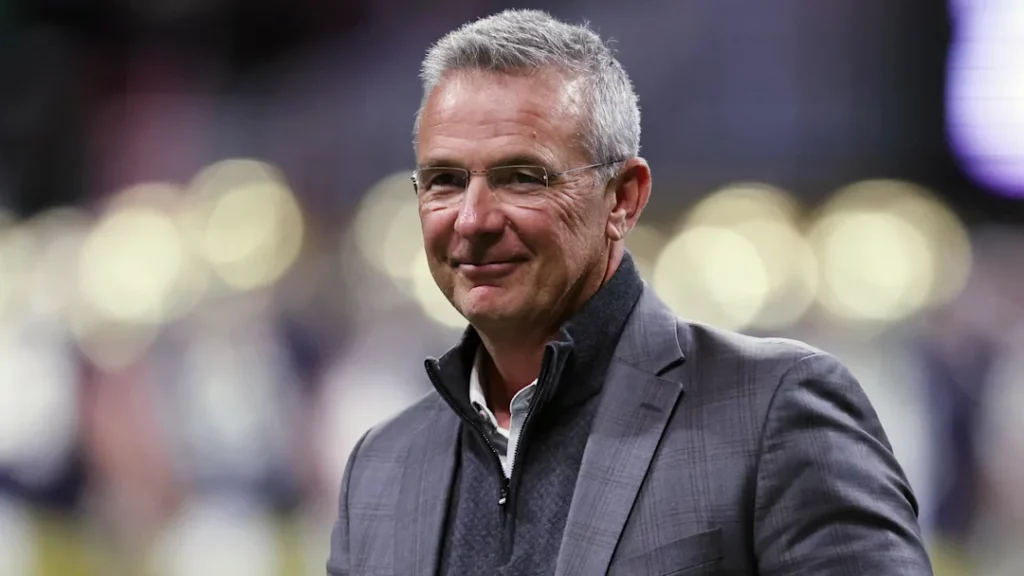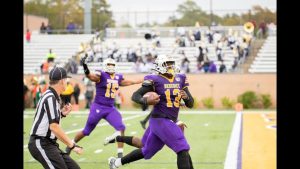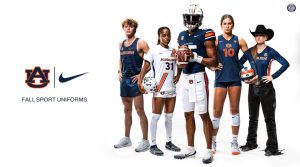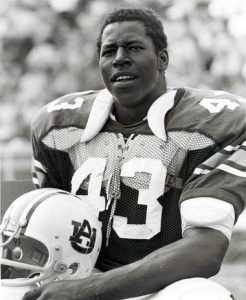
Urban Meyer, one of college football’s most iconic and successful coaches, has never been one to shy away from expressing his candid views about the sport he loves. Known for his remarkable coaching stints at Florida, Ohio State, and briefly at Jacksonville Jaguars in the NFL, Meyer’s opinions carry significant weight in the world of college football. Recently, Meyer dropped a major take that has sent ripples through the college football landscape, sparking debates among fans, analysts, and insiders alike. His perspective sheds light on where college football is headed, what challenges lie ahead, and what the sport must do to remain relevant and competitive in an increasingly complex sports environment.
Meyer’s take, blunt and unapologetic, revolves around the fundamental transformation college football is undergoing due to evolving athlete empowerment, media influence, and structural changes in the game’s governing bodies. According to him, these changes will reshape the sport in ways fans have never seen before, fundamentally altering the way programs operate, players are developed, and games are played.
One of the key points Meyer emphasized is the impact of Name, Image, and Likeness (NIL) deals on college football’s traditional structure. The advent of NIL has revolutionized how college athletes interact with the business side of sports. No longer are players simply amateurs; they are becoming entrepreneurs, celebrities, and brands in their own right. While Meyer acknowledged the benefits NIL offers athletes, providing them with financial opportunities previously unimaginable, he also expressed concerns about how it affects team dynamics and recruiting.
Meyer explained that the influx of NIL money has introduced a new kind of pressure on athletes and coaching staffs alike. “It’s no longer just about football,” Meyer stated. “There’s a whole new business aspect. Coaches have to manage not only player development and X’s and O’s but also the player’s brand, their endorsements, and social media presence. It’s a different game now.” He argued that this shift could potentially disrupt team chemistry if not handled properly, as players might prioritize personal financial gain over team success.
Recruiting, a domain where Meyer built his reputation as a master tactician, is also undergoing seismic changes. The traditional recruiting pitch, built on a program’s history, coaching staff, facilities, and playing style, is now competing with the allure of NIL opportunities and social media influence. Top recruits are increasingly drawn to schools that can maximize their off-field earning potential, sometimes irrespective of the program’s competitive stature. Meyer believes this new recruiting landscape demands coaches to evolve beyond their football acumen to become adept negotiators and brand managers to retain and attract talent.
Beyond NIL, Meyer also tackled the growing influence of the College Football Playoff (CFP) system and the discussions around its expansion. As the sport continues to grapple with how best to crown a national champion, Meyer warned about the potential pitfalls of further expanding the playoff field. “Expanding the playoff sounds good on paper,” he said, “but it could dilute the importance of the regular season, exhaust players, and stretch coaching staffs too thin.” Meyer’s perspective underscores a growing debate in college football circles about balancing competitive fairness with player welfare and the integrity of the season.
In his commentary, Meyer also touched on the increasing role of technology and analytics in the game. While he admitted he was an old-school coach at heart, relying on intuition and experience, Meyer recognized the undeniable value of data-driven decision-making in modern football. From play-calling to injury prevention, the integration of technology has changed how coaches prepare and strategize. He encouraged programs to embrace these advances but cautioned against losing the human element that makes college football unique — the passion, unpredictability, and emotion.
Meyer’s take further delved into the changing cultural and social dynamics influencing college football. The rise of athlete activism, mental health awareness, and demands for diversity and inclusion are reshaping the locker room environment. Meyer praised the progress made but stressed that coaches must become more than just tacticians; they must also be mentors, advocates, and leaders who understand and support their players beyond the field. “Today’s players are more aware, more connected, and expect more from their programs,” Meyer explained. “It’s not enough to just win games anymore — you have to build people.”
Moreover, Meyer raised concerns about the widening financial gap between Power Five conferences and smaller programs. The escalating costs of running a competitive program, combined with lucrative TV contracts and NIL deals concentrated among elite schools, could threaten the competitive balance of college football. Meyer warned that unless the sport finds ways to distribute resources more equitably, the risk of creating an uncompetitive, tiered system where only a handful of schools dominate year after year could become a reality.
He also touched on the role of the NCAA and its ability to govern college football effectively in this new era. Meyer expressed skepticism about the NCAA’s capacity to keep pace with rapid changes, citing bureaucratic inertia and conflicting interests. “The NCAA needs to adapt or risk becoming irrelevant,” he asserted. He suggested that a more streamlined, transparent, and player-centered governing model might be necessary to navigate the future landscape successfully.
Despite his critical observations, Meyer remained optimistic about college football’s future. He believes the sport’s resilience and passionate fan base will help it thrive amid change. “College football is about more than just the game,” Meyer said with conviction. “It’s about tradition, community, and the thrill of competition. That won’t go away.” He urged stakeholders — from coaches and administrators to players and fans — to embrace change thoughtfully and collaboratively.
Meyer’s major take on the college football landscape is a wake-up call for the sport’s stakeholders. It highlights that while change is inevitable, how that change is managed will determine whether college football continues to flourish or faces significant challenges. His insights serve as a reminder that the game is not just evolving on the field but in every aspect that touches the lives of players, coaches, and fans.
As college football stands at this crossroads, Meyer’s voice — shaped by years of unparalleled success and experience — offers valuable guidance. His emphasis on balancing innovation with tradition, prioritizing player welfare, managing the new business realities of NIL, and fostering inclusive, supportive environments reflects the complexity of today’s college football ecosystem.
In conclusion, Urban Meyer’s bombshell take on the future of college football is both a reflection and a forecast. It reflects the realities already unfolding in the sport — the changing power dynamics, the new challenges coaches face, and the shifting priorities of athletes. It forecasts a future where adaptability, leadership beyond the X’s and O’s, and a commitment to player-centered values will define success. For fans, it’s a call to appreciate the evolving game with both excitement and awareness. For coaches and administrators, it’s a strategic imperative to rethink how they operate in this new era. And for players, it’s a signal that their role in shaping college football’s future is more significant than ever.
Urban Meyer’s voice echoes across the college football landscape not just as a legend but as a harbinger of change. His bombshell take will likely fuel conversations, influence decisions, and inspire action that shapes the next chapter of this beloved sport for years to come.





